Do Solar Lights Need To Be In Direct Sunlight: Direct vs. Indirect Sunlight – Which is Better?
Solar lights are a vital part of sustainable lighting, offering an environmentally friendly alternative to traditional grid-powered systems. By capturing the sun’s energy and converting it into electricity, these lights illuminate gardens, pathways, and public spaces at night. However, their performance depends heavily on one key factor: exposure to sunlight. The difference between full, unfiltered sunlight and softer, diffused light significantly affects efficiency, brightness, and durability. This article explores these performance differences, examines contributing factors, and offers practical tips to optimize solar light performance across various settings.
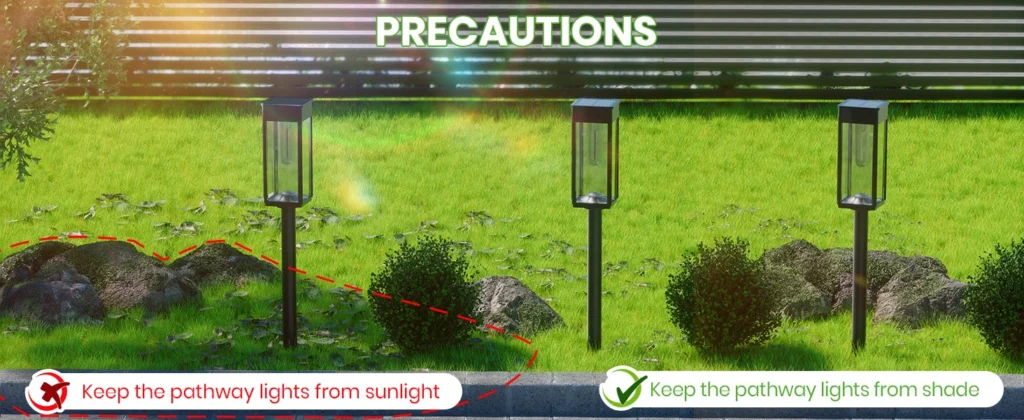
Understanding Full and Diffused Sunlight
To understand how solar lights work, it’s important to distinguish between full, unfiltered sunlight and diffused, filtered light. Full sunlight occurs when the sun’s rays hit the solar panel without obstruction, such as in open fields or on clear rooftops, addressing the question do solar lights need to be in direct sunlight. Diffused light, by contrast, is scattered or partially blocked, often found under tree cover, near reflective surfaces, or in cloudy weather. This distinction is key to determining whether solar lights have to have direct sunlight to function effectively.
A solar panel’s efficiency depends on the intensity and amount of sunlight it receives. Unobstructed sunlight provides higher electrical energy, measured in watts per square meter, enabling greater electricity generation by photovoltaic cells. Diffused light, while still usable, delivers less energy, reducing charging efficiency. Research shows that panels in full sun can capture up to 1000 W/m² on clear days, while shaded or cloudy days may yield only 100-500 W/m², depending on obstructions or weather.
Performance in Full Sunlight
Solar powered lights perform best when exposed to unfiltered sunlight, answering the query do solar lights need direct sunlight. The panel converts a higher percentage of sunlight to charge into electricity, storing it in the rechargeable battery for nighttime use. This leads to brighter light, longer operation, and consistent performance, enhancing the outdoor space. For instance, a high-efficiency solar powered light can fully charge solar light in 6-8 hours of strong sunlight, delivering 8-12 hours of bright illumination, depending on battery capacity and LED power.
Full sun exposure also extends the lifespan of solar lights, making them cost effective. A well-charged rechargeable battery undergoes less stress, avoiding deep discharge cycles that can harm battery health. Lights in open areas are also less likely to undercharge, ensuring reliable operation even during shorter winter days.
However, intense sunlight poses challenges. Prolonged exposure to high temperatures can stress panels and batteries, potentially shortening their lifespan if not built with durable materials. For example, studies indicate that lead-acid or lithium-ion batteries may lose 20% of their lifespan for every 10°C increase above optimal temperatures.
Performance in Diffused Light
In shaded or cloudy weather, solar lights receive less light to charge, impacting their performance. Lower light intensity slows charging and reduces stored electrical energy, resulting in dimmer output or shorter illumination times. For example, a solar powered light in a shaded area might need 10-12 hours to partially charge solar light, providing only 4-6 hours of light at reduced brightness.
Despite these challenges, modern solar panels, especially those using monocrystalline or polycrystalline silicon, can still capture diffused light effectively, proving that solar lights work even on cloudy days. This makes them eco friendly and suitable for partially shaded or overcast environments. However, efficiency can drop by 50% or more compared to full sun conditions.
The rechargeable battery type also matters. High-quality lithium-ion batteries handle low-charge scenarios better than lead-acid batteries, which can suffer from sulfation when undercharged. This makes advanced batteries more reliable in less-than-ideal light to charge conditions.
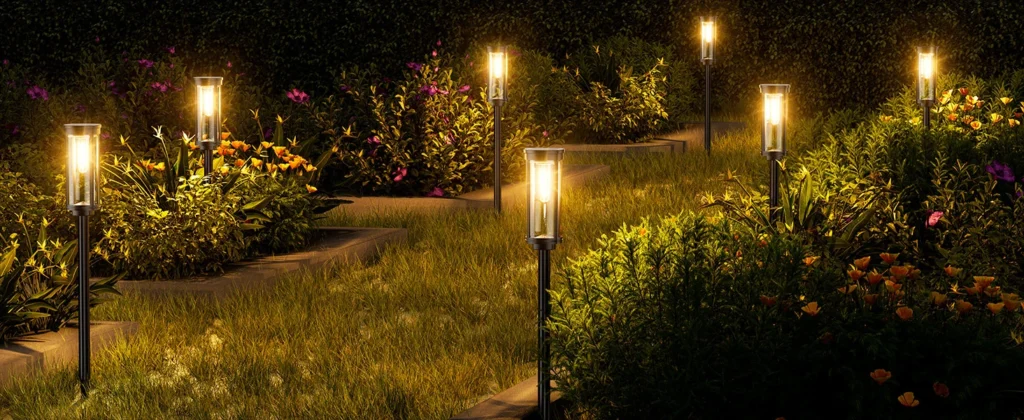
Key Factors Influencing Performance
Several components affect how solar lights work under different light conditions:
- Solar Panel Efficiency: The panel’s type and quality are critical. Monocrystalline panels (15-22% efficiency) outperform polycrystalline (13-16%) or amorphous panels (6-8%) in both strong and diffused light. High-efficiency panels help offset losses in shaded areas, addressing whether solar lights have to have direct sunlight.
- Battery Capacity and Type: The rechargeable battery determines energy storage and runtime. Larger-capacity batteries (e.g., 200 watt-hours or more) can compensate for slower charging in low amount of sunlight, ensuring longer illumination.
- LED Efficiency: LEDs with high lumens per watt deliver brighter light while using less power, making them ideal for suboptimal conditions and enhancing outdoor space.
- Controller Technology: Charge controllers regulate energy flow between the panel, battery, and LED. Advanced controllers, like those with Maximum Power Point Tracking (MPPT), can boost efficiency by up to 30%, especially in diffused light.
- Environmental Factors: Weather, seasonal changes, and location affect light to charge availability. Areas with frequent cloudy weather or long winters rely more on diffused light, requiring robust system designs.
Tips to Boost Solar Light Efficiency
To optimize solar powered light performance in varying light conditions, consider these practical strategies:
- Maximize Light Exposure: Position panels in areas with minimal shade, ideally facing south in the Northern Hemisphere (or north in the Southern Hemisphere) to capture the most sunlight to charge. Adjustable mounts can tilt panels to optimize the sun’s angle, boosting energy capture by 10-25%. For shaded areas, choose lights with panels designed for low-light conditions, ensuring solar lights work effectively.
- Select High-Efficiency Components: Opt for lights with monocrystalline panels and lithium-ion rechargeable batteries. These offer better performance and durability, especially in challenging conditions, making them eco friendly and cost effective. For example, a monocrystalline panel can generate up to 20% more power than a polycrystalline one in diffused light.
- Use Smart Controllers: Equip lights with MPPT controllers to maximize energy harvesting. These adjust voltage and current for optimal power output, which is especially helpful in inconsistent amount of sunlight conditions like cloudy days.
- Maintain Panels Regularly: Dust and debris can reduce panel efficiency by up to 30%. Clean panels with a soft cloth and mild detergent to ensure maximum light absorption, particularly in low-light settings, to effectively charge solar light.
- Adjust Lighting Settings: Many solar powered lights allow brightness or timing adjustments. In areas with limited sun, set lights to lower brightness or shorter durations to conserve electrical energy. Motion sensors can also reduce power use by activating lights only when needed, enhancing cost effective operation.
- Plan for Seasonal Changes: In regions with long winters or frequent cloudy weather, consider hybrid lights that switch to grid power during low-light periods. Alternatively, use oversized panels and batteries to store excess energy during sunny times, ensuring reliable performance.
- Leverage Reflective Surfaces: In shaded areas, place reflective surfaces like white walls or metallic panels near lights to redirect scattered light onto the panel, increasing energy capture by up to 15%, improving light to charge efficiency.
Case Study: Real-World Example
A suburban park with open fields and tree-lined paths illustrates these principles. Solar LED lights in open areas, receiving 6-8 hours of full sunlight daily, provide bright, 10-hour illumination. Lights under trees, reliant on diffused light, initially struggled, lasting only 5 hours. By upgrading to monocrystalline panels and MPPT controllers, the park boosted shaded lights’ performance by 40%, extending runtime to 8 hours. Regular cleaning and strategic placement further improved efficiency, showing the impact of tailored solutions.
Conclusion
The performance of solar lights depends on light exposure, component quality, and environmental factors. Unfiltered sunlight delivers superior charging and brighter output, but diffused light can still be effective with the right technology and strategies. High-efficiency panels, robust batteries, and smart controllers maximize performance in any condition. Regular maintenance, thoughtful placement, and adaptive settings further enhance reliability, making solar lights a sustainable, dependable solution for diverse lighting needs, from gardens to urban parks.posure ensures that solar lights deliver optimal performance, longevity, and environmental benefits.

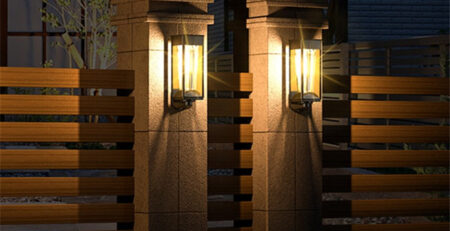

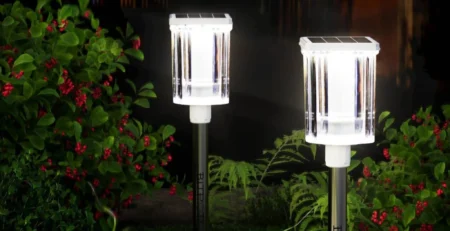

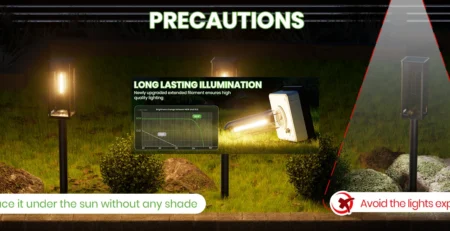
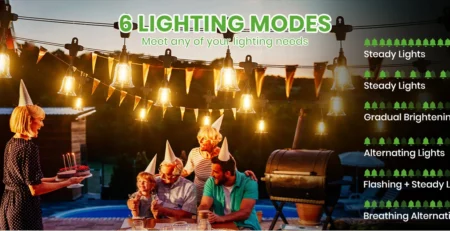
-4-2-450x231.webp)
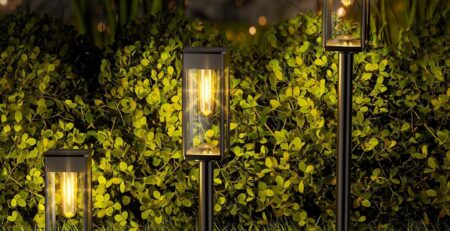


Leave a Reply